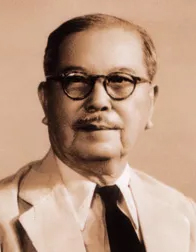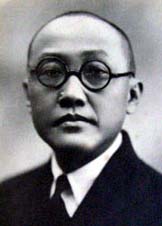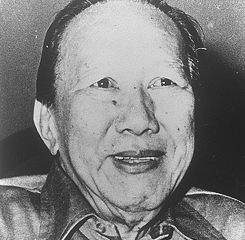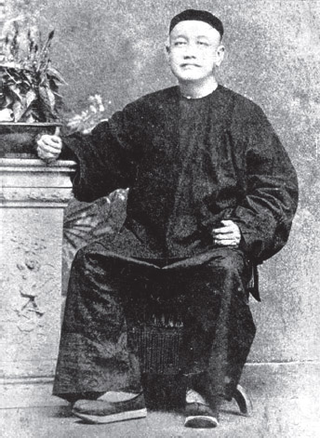Related Research Articles

Nanyang Technological University (NTU) is one of Singapore's two major national universities. Founded in 1981, it is also the second-oldest autonomous university in the country.

The Singapore Management University (SMU) is a publicly-funded private university in Singapore. Founded in 2000, SMU is the third oldest autonomous university in the country, and models its education after the Wharton School. It is also the only university in Singapore with a city campus. The university was also awarded triple accreditation by AACSB, EQUIS and AMBA.

Tan Kah Kee was a Chinese businessman, investor, and philanthropist active in Singapore and the Chinese cities of Hong Kong, Shanghai, Xiamen, and Guangzhou.

The Hwa Chong Institution (HCI) is a independent secondary educational institution in Bukit Timah, Central Region, Singapore. It was established in 2005 by the merger of The Chinese High School (1919–2004) and Hwa Chong Junior College (1974–2005).

Oversea-Chinese Banking Corporation, Limited, often known as OCBC Bank, is a Singapore multinational banking and financial services corporation headquartered in OCBC Centre, Singapore. OCBC Bank was born out of the Great Depression through the consolidation of three banks in 1932 — the Chinese Commercial Bank Limited, the Ho Hong Bank Limited and the Oversea-Chinese Bank Limited.

Tony Tan Keng Yam is a Singaporean former politician who served as the seventh president of Singapore between 2011 and 2017. Tan has been appointed Director and Special Advisor to GIC, with effect from 1 January 2018. He is one of the living former president, as well as the oldest living since the death of S. R. Nathan in 2016.

Wong Kan Seng is a Singaporean former politician who served as Deputy Prime Minister of Singapore between 2005 and 2011.

Lee Kong Chian, also known by his alias Lee Geok Kun, was a prominent Chinese businessman and philanthropist based in Malaya and Singapore between the 1930s and the 1960s. He was the founder of the Lee Foundation and one of the richest men in Southeast Asia in the 1950s and 1960s. He was also a son-in-law of Tan Kah Kee, another well-known Chinese businessman and philanthropist based in Southeast Asia.
Lee Seng Wee was a Singaporean banker and businessman.
Lee Seng Tee was a Singaporean businessman and philanthropist.

Lim Koon Teck(Chinese: 林坤德) was a barrister-at-law, industrialist and politician in the Malaya and Singapore. He was the first Asian in the Straits Settlements to be appointed to the Colonial Legal Service. He was a magistrate at Penang and Crown Counsel, Singapore. After resigning government service, he joined the Lee Rubber Company. He was interested in introducing new construction methods, like lightweight concrete, to bring down building costs and was interested in helping to solve Singapore's housing shortage. These directed his commercial and political activities.

Poh Ern Shih is located on a small hilltop at Chwee Chian Road, off Pasir Panjang Road, on Singapore's southern coast. The Buddhist temple was built as a memorial to those who lost their lives during the Battle of Pasir Panjang in 1942, villagers as well as Allied and Japanese soldiers. The temple's first abbot, Sumangalo, an American Theravadin monk, was the first Westerner to be appointed abbot of a Buddhist temple in Singapore.

Lee Choon Seng was a businessman and philanthropist in pre-independence Singapore. He founded several companies, cultivated rubber plantations in Malaya and started Chinese banks in the region. Lee held leadership roles in several Chinese community organisations in Singapore, notably the Singapore Chinese Chamber of Commerce and Industry (SCCCI), and supported Sun Yat-Sen's revolutionary cause in China. In addition, he promoted the growth of Buddhism in Singapore by setting up several Buddhist institutions, including the Singapore Buddhist Lodge, Singapore Buddhist Federation and Poh Ern Shih Temple. In 2008, his life and contributions to society were commemorated in a memorial hall at the Ee Hoe Hean Club.

The Ee Hoe Hean Club, founded in 1895 and located at Bukit Pasoh Road in Chinatown, was a millionaires' club in Singapore. Besides functioning as a social and business club, members of the club were actively involved in the political development of China in the early 20th century. The club supported the 1911 Xinhai Revolution which overthrew the Qing Dynasty, and later the establishment of the Republic of China. During World War II, it was the headquarters of the anti-Japanese China Salvation Movement in Southeast Asia from 1937 to 1942. On 18 October 1995, the club was gazetted as a Heritage Site by the National Heritage Board of Singapore.
Singaporean National Badminton Championships is an annual badminton tournament held in Singapore since 1961.

Joseph Choo Seng Quee, popularly known as Uncle Choo, was a Singaporean footballer and football coach. He was coach of the Indonesia, Malaya/Malaysia and Singapore national teams. He is widely recognised as one of Singapore's best football coaches.

The Lee Kong Chian Natural History Museum is a museum of natural history at the Kent Ridge Campus of the National University of Singapore. It is named after Lee Kong Chian, a prominent Chinese businessman and philanthropist active in Malaya and Singapore between the 1930s and the 1960s. It was officially opened on 18 April 2015.
The Lee Kong Chian School of Medicine is the medical school of the Nanyang Technological University. The school was established in 2013 as Singapore's third medical school, after the Yong Loo Lin School of Medicine and the Duke–NUS Medical School. It is a collaboration between Nanyang Technological University and Imperial College London.

Cheang Hong Lim JP was a Chinese opium merchant and philanthropist in Singapore. He was recognised by the British colonial administration as head of the local Hokkien Chinese community.
References
- ↑ "Many businessmen in S'pore, but few are like Dr Lee Seng Gee: PM". TODAY. Retrieved 15 October 2017.
- ↑ "Main Shareholders - Singapore Press Holdings". sph.listedcompany.com.
- ↑ Lee, Su Shyan. "Two old S'pore families compete for Straits Trading". AsiaOne. Archived from the original on 17 May 2008. Retrieved 15 October 2017.
- ↑ "Singapore Press Holdings Ltd". Nikkei Asian Review. Archived from the original on 11 October 2017. Retrieved 15 October 2017.
- ↑ Tan, Bonny. "Destined to be an entrepreneur and a philanthropist to be remembered". BiblioAsia– via Academia.
- ↑ "In Memoriam - Mr Lee Seng Gee". Blue Skies (ACS Alumni Page). Retrieved 15 October 2017.
The Lee Kuo Chuan Auditorium on the Barker Road site in the 1950s was the first major gift to the ACS family.
- ↑ "Lee Kuo Chuan Auditorium at Maris Stella High School, circa 1968". BookSG - National Library Board, Singapore. Retrieved 15 October 2017.
- ↑ "Anglican High born amid the turbulence of the 1950s" . Retrieved 15 October 2017.
and the $75,000 Lee Kuo Chuan Stadium, built in 1965, reflecting generous support from the Lee Foundation
- ↑ "New nursery". The Straits Times. 25 May 1956. Retrieved 15 October 2017.
- ↑ "Minister Byrne opens $40,000 creche". The Straits Times. 21 October 1962. Retrieved 15 October 2017.
- 1 2 "李光前从"落叶归根"到"落地生根" 对国家认同转变映照社会变迁" [Lee Kong Chian's recognition of the state as a reflection of social change, from "yearning to return" to "putting down roots"]. Lianhe Zaobao. 18 October 2017. Retrieved 20 October 2017.
- ↑ "Giving to the school". Singapore Management University. Retrieved 15 October 2017.
He left a major portion of his wealth to the Lee Foundation
- ↑ Chew, Melanie (29 July 2015). Leaders of Singapore. World Scientific. p. 26. ISBN 9789814719452.
- ↑ Ming, Chuang Peck. "Philanthropist and businessman Lee Seng Gee dies (Amended)". The Business Times. Retrieved 15 October 2017.
- ↑ "Two old S'pore families compete for Straits Trading". 11 February 2008.
Although Mr Lee Seng Wee's son Tih Shih, 44, sits on the OCBC board
- ↑ "OCBC - Who we are -Leaders - Board of Directors". www.ocbc.com.
He is a Director of Lee Foundation and several Lee Rubber Group Companies.
- ↑ "THE BILLIONAIRES 1990 -". Fortune. 10 September 1990. Retrieved 20 October 2017.
Lee Seng Wee, along with brothers Lee Seng Tee and Lee Seng Gee, is known for philanthropy as well as reticence.
- ↑ "Lee Seng Wee & family". Forbes. Retrieved 20 October 2017.
- ↑ "$60m for new National Library". TODAY. 16 September 2003. Retrieved 20 October 2017.
- ↑ "SM Goh Officially Opens The Lee Kong Chian Building at Singapore Management University". Singapore Management University. Retrieved 15 October 2017.
- ↑ Tan, Dawn Wei (12 October 2013). "Dinosaur trio reunited with arrival of Prince". The Straits Times. Archived from the original on 15 October 2017. Retrieved 15 October 2017.
- ↑ "Lee Foundation gives $150m to NTU medical school". www.asiaone.com. Retrieved 15 October 2017.
- ↑ His Philanthropy Benefitted Generations – To Commemorate the 50th death anniversary of Mr. Lee Kong Chian
- ↑ "Lee Kong Chian Distinguished Fellowship". Archived from the original on 18 July 2016.
- ↑ "Lee Foundation donates RM50mil to UTAR". The Star Online. Retrieved 8 March 2016.